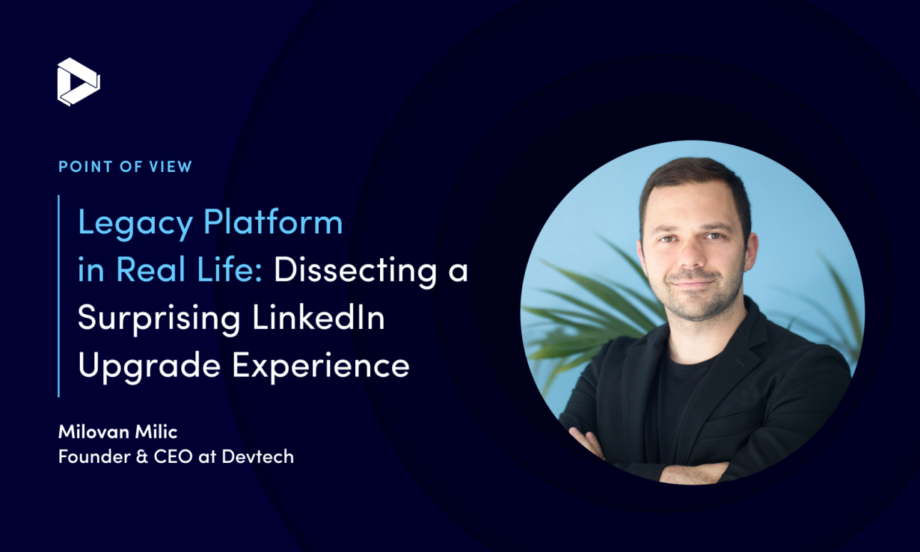By Milovan Milic, CEO of Devtech
Our recent experience upgrading to LinkedIn Sales Navigator Advanced Plus reminds me that no matter how successful a company is, end users can still feel like we are in the 1990s instead of 2023—surprising in an era when a seamless UX should be table stakes. Companies that modernize their systems and platforms to create a unified user experience will win in the experience economy. Industry studies consistently show that a well-designed user experience can significantly increase conversion rates, enhance customer loyalty, and drive revenue growth.
The LinkedIn upgrade experience was surprising, particularly given the innovation that the company typically displays. LinkedIn Co-Founder Reid Hoffman recently said, “Try to predict where it’s going in this volatility and skate to where the puck is going, not where it is.” I could not agree more.
What we thought would be a quick upgrade process required many ongoing touchpoints — over a whopping 19 days!
We initially engaged with a project manager regarding the license upgrade, and we found it surprising that there was no self-service portal. This is essential for digital-first companies. Hubspot indicates that 67% of customers prefer self-service over speaking to a support agent. Additionally, 90% of customers prioritize having an “immediate” response to a customer service question.
The upgrade process was laborious, with simple steps such as confirming the license count and the cost of upgrading taking significant back and forth. Promises of license delivery indicated “soon,” which left the user wondering, “when”? After a licensing delay, a flurry of emails again. We went 19 days without CRM integration and spent considerable time on repetitive and often unnecessary touchpoints. This resulted in considerable lost time and productivity.
On day 19, we finally received the licenses—and are now benefiting from LinkedIn’s incredible capabilities. But what a journey! These challenges are far too familiar and reflect the critical importance of modernizing systems and platforms across the enterprise. Innovation in UX is not just about technology; it’s about forging meaningful connections and growing together.
In our work with emerging companies and Fortune 500 organizations, we see shared challenges with modernization efforts, including:
- Disparate systems need to come together with proper backend integration. The right integration strategy can help businesses connect disparate systems and ensure they communicate with each other seamlessly.
- “Under the hood” legacy, clunky systems with limited process automation capabilities often prevent a seamless UX. Legacy applications form the backbone of many enterprises, yet they hold companies back from leveraging new digital technologies. These technologies are crucial to create modern experiences for customers and partners. IT teams need a way to rapidly connect legacy systems to modern applications while minimizing disruption to these systems.
- Self-service portal capabilities allow users to independently manage their experiences, e.g., run purchasing processes, navigate upgrades, or buy new licenses. This eliminates the need for tasks such as manually signing DocuSign or communicating with a salesperson. This service, in turn, enables highly effective time-to-revenue for companies. This convenience also increases customer satisfaction and loyalty, which can lead to higher retention rates and increased revenue.
We applaud LinkedIn Chief Product Officer (CPO) Tomer Cohen and the rest of the LinkedIn team for continued innovation that benefits its 900 million (and growing) users worldwide. Yet LinkedIn, like most of today’s companies, can benefit from accelerating critical modernization of next-generation platforms to deliver an exceptional, seamlessly integrated UX that will only leave us wanting more. The key is an end-to-end digital innovation strategy that puts the user in the center. As a leader, are you willing to let outdated experiences hold back your potential?”


